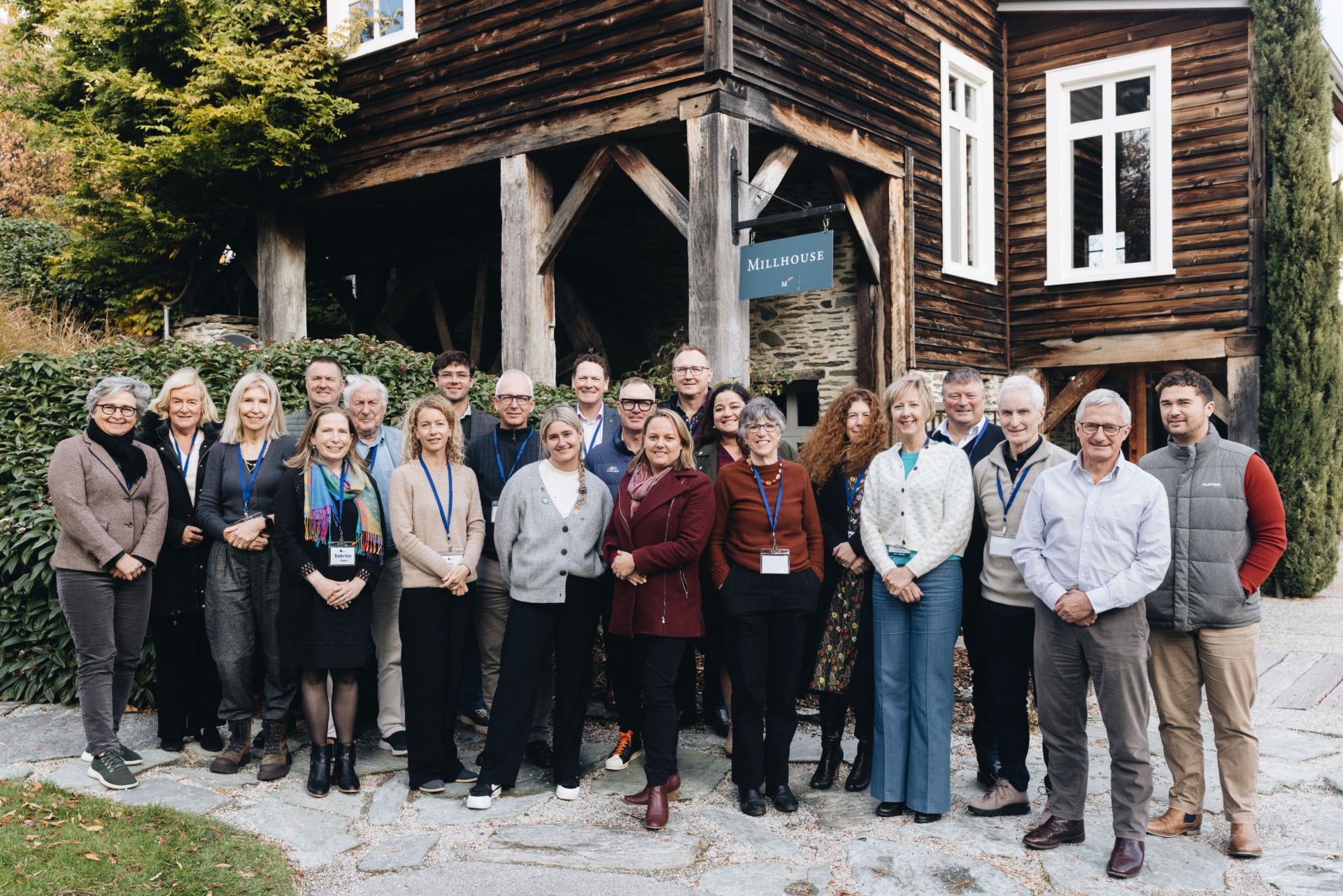This post is part of a series of interviews with thought leaders to explore issues on the frontier of the complex domain of ESG.
![]()
Today a company’s societal impact must be measured in multiple ways: by assessing its influence on the environment, its employees, and the communities it serves—at home and abroad. And various audiences have different questions about how to measure the impacts on each. The task of answering these questions falls specifically to leaders like Justina Nixon-Saintil, Vice President and Chief Impact Officer at IBM.
As the Chief Impact Officer, Nixon-Saintil is responsible for bringing rigor and clarity to a set of initiatives that span issues from the environment to social equity, at home and abroad, and the private sector and NGOs.
In such a broad remit, does the framework of ESG (Environmental, Social and Governance factors) help focus analysis of corporate impact? Yes, says Nixon-Saintil, but she posits that giving meaning to ESG’s complexities requires understanding what the company’s various audiences care about and being able to craft targeted communications for each.
To learn more about Nixon-Saintil’s role and the ESG focus at IBM, Judy Samuelson, executive director of the Aspen Institute’s Business & Society Program, recently spoke with Nixon-Saintil about the evolving nature of a company’s responsibilities to shareholders, employees and society—and what it takes to give meaning to a multifaceted set of initiatives and audiences.

Judy Samuelson: Your titles over the last three years have evolved. You joined IBM as Head of Global Corporate Social Responsibility and now you are the Chief Impact Officer? How do the changes align with IBM’s ESG initiatives?
Justina Nixon-Saintil: My title has changed in line with the overall evolution and broadening of corporate social responsibility. In the past philanthropy was much simpler, organizations requested a grant and companies vetted those applications. Employees may not have had a meaningful engagement with that organization. Then we began asking ourselves: what is the responsibility of a corporation to support the communities, especially where it conducts business and where its employees live, and how do you start using all of the resources of your company to meet their needs? Now, the questions are, how do we drive impact? What is the outcome that we want to have? That has broadened IBM’s perspective on social responsibility. How do we leverage all of the resources of the business, our solutions, platforms, expertise, and then partner externally with nonprofit organizations, government entities, with other clients to drive impact on the ground?
JS: A lot of what IBM does is in the ‘S’ space. But how do you think about the relationship between the ‘S’ and the ‘E’? Is it changing?
Nixon-Saintil: It’s definitely changing. The “S” is now a big part of everything that we do. You can’t create and implement a set of environmental programs, solutions and initiatives without thinking about the impact on the community. To achieve a just transition, you must make sure you’re not excluding marginalized or vulnerable communities. For example, if you think about Artificial Intelligence (AI) ethics, which is part of our governance model, how do you make sure that you are thinking about the communities that are most impacted by new technologies? How do you make sure they’re aware of the positive impacts of AI and its potential risks, and that they have the information they need to make educated decisions about AI so that it will benefit them?
With our net zero commitment by 2030, we also have to think about IBM’s solutions and platforms that can make a difference for those vulnerable communities most impacted by environmental threats. We must be intentional about not damaging or hurting communities, and we must help those communities to advance. That commitment to communities has to underpin everything we do across the ‘E.’ And of course a huge part of the ‘S’ is already focused on human capital, community engagement, supply chain, but it also has to be a part of what you’re thinking about under the ‘G.’
E, S and G are not standalone buckets with specific initiatives in each. You have to consider how they are integrated across the entire company. When you think about creating solutions or platforms, you should be considering what’s the impact on people, and on communities.
JS: How do you know that your commitment to work in this integrated way is really making a difference?
Nixon-Saintil: We do it by working with our partners and helping support their capacity building and ability to measure impact. Because the nonprofit organizations we work with are the ones on the ground and they’re closer to the communities, they can provide insight into what’s working.
For example, with our education program, SkillsBuild, we made a commitment to skill 30 million people by 2030. We built an open learning platform but partnered with nonprofit organizations that work directly with people who have been historically excluded from the tech field. We bring training, mentorship, and other resources to these communities; and we measure our impact.
We look at whether people who use the platform move into new jobs or increase economic and social mobility for themselves and their families. We know the number of people that are actually taking advantage of the training and obtaining credentials. And, we have partners on the ground who are connecting them to job opportunities
It’s the same with our Sustainability Accelerator, a program that applies IBM technologies, such as hybrid cloud and AI, and offers an ecosystem of experts to enhance and scale nonprofit and government organization initiatives. We are working, for example, on sustainable agriculture with farmers. If you’re in a drought-ridden area, we provide tools to help farmers understand the best times to plant and water, to enhance the productivity of their farms. The way that we are measuring impact is by knowing how many farmers actually have taken advantage of the tools and increased yield because of it.
JS: Is there a tension or disconnect between definitions of success and impact at the grassroots level versus the investor community in the US that emphasizes ESG ratings or metrics?
Nixon-Saintil: I wouldn’t call it a tension, but the way we communicate with our employees versus society at large, the investor community, or even clients, is very different.
Take, for instance, IBM’s global initiative of logging four million volunteer hours by 2024.
When we speak externally to analysts, we talk about the goal. Investors appreciate that we have specific ESG commitments and are demonstrating our progress. They are interested in what IBM is doing around innovation, technology, social impact, human capital management, and community engagement. We get positive feedback because of the depth of our analyses. We can provide the data that shows we’re making a difference. And we share stories about the farmers in Texas or Malawi or India that we’re supporting through our technology.
But when we talk to our employees, we don’t necessarily talk about the target. We talk about what can you do to help your local community — because that’s what they care about. They are deeply engaged with those programs, not just for the impact we have in the community and being able to support our partnerships, but also because they sometimes have an opportunity to upskill themselves through our programs.
So, it’s not so much a tension, so much as it is a need to be mindful of how you convey impact in a way that really resonates with different audiences.
JS: What do you think the field needs to do to move forward? Do you have some advice or suggestions?
Nixon-Saintil: It’s important for businesses to make sure they continue to invest in innovation in this space. There’s a place where the expertise of the finance team and the expertise of ESG leaders come together in a really great way. You have to be clear on the strategic alignment of ESG with your business.
The example of the professional development for employees I shared is just one such case. Our work with non-profits also supports product development strategy, since the non-profits we work with give us input on how well our products serve their needs. It’s a two-way street, and we bring them into our IBM garage to co-create with them.
The point is that making the case for how the social impact work aligns with business strategy is key to getting support from leaders and access to the right resources. You don’t want to lose speed or not focus on the impact. Stay the course and continue to have a strong voice. There are some challenges in the politicization of this type of work, but it’s important that businesses continue to band together and focus on impact and what society needs.
Indeed, society needs business leaders with a conviction that financial gains and earth and people friendly operations are not mutually exclusive. As this field continues to evolve, businesses must empower their executives to track, evaluate and measure impact across initiatives.
![]()
This post is part of an interview series with thought leaders to explore frontier issues in the complex domain of ESG. These issues will be explored in Aspen at the Aspen ESG Summit from July 9-11, 2024.
SUBSCRIBE TO OUR MONTHLY NEWSLETTER!
Want more insights like these on business and the health of society? Sign up to receive thought leadership and updates from the Business & Society Program each month!

